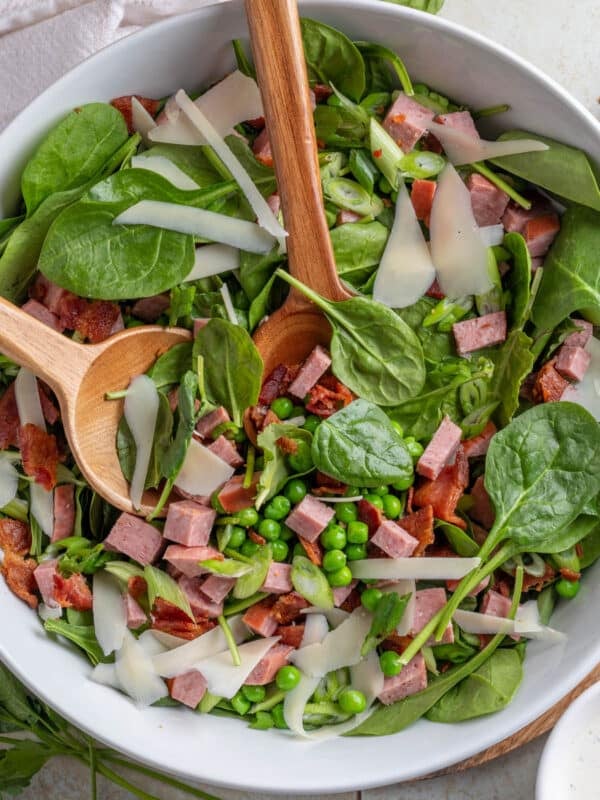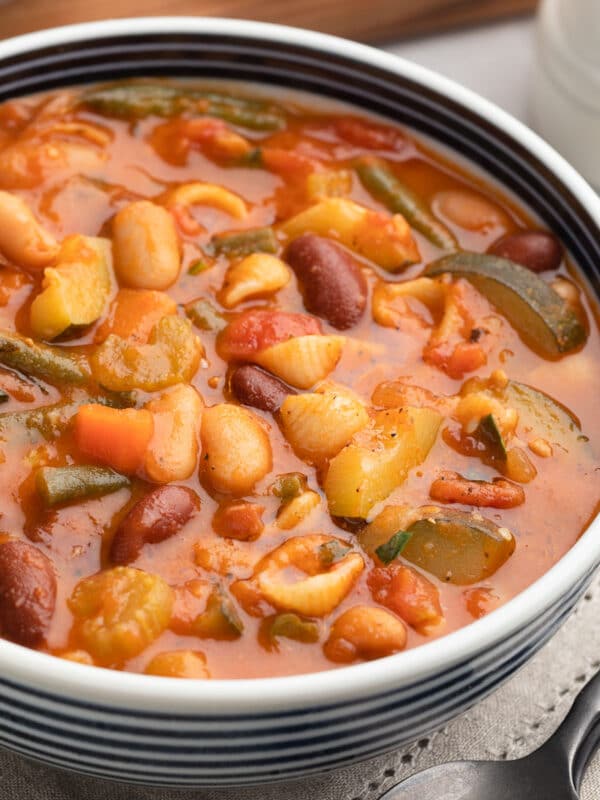Roasted Root Vegetables are a classic, easy-to-make dish that’s perfect for fall and winter meals. Ideal for cozy family dinners or as a colorful addition to a holiday table, this simple roasting method transforms potatoes, carrots, beets (and more) into a warm and satisfying side.
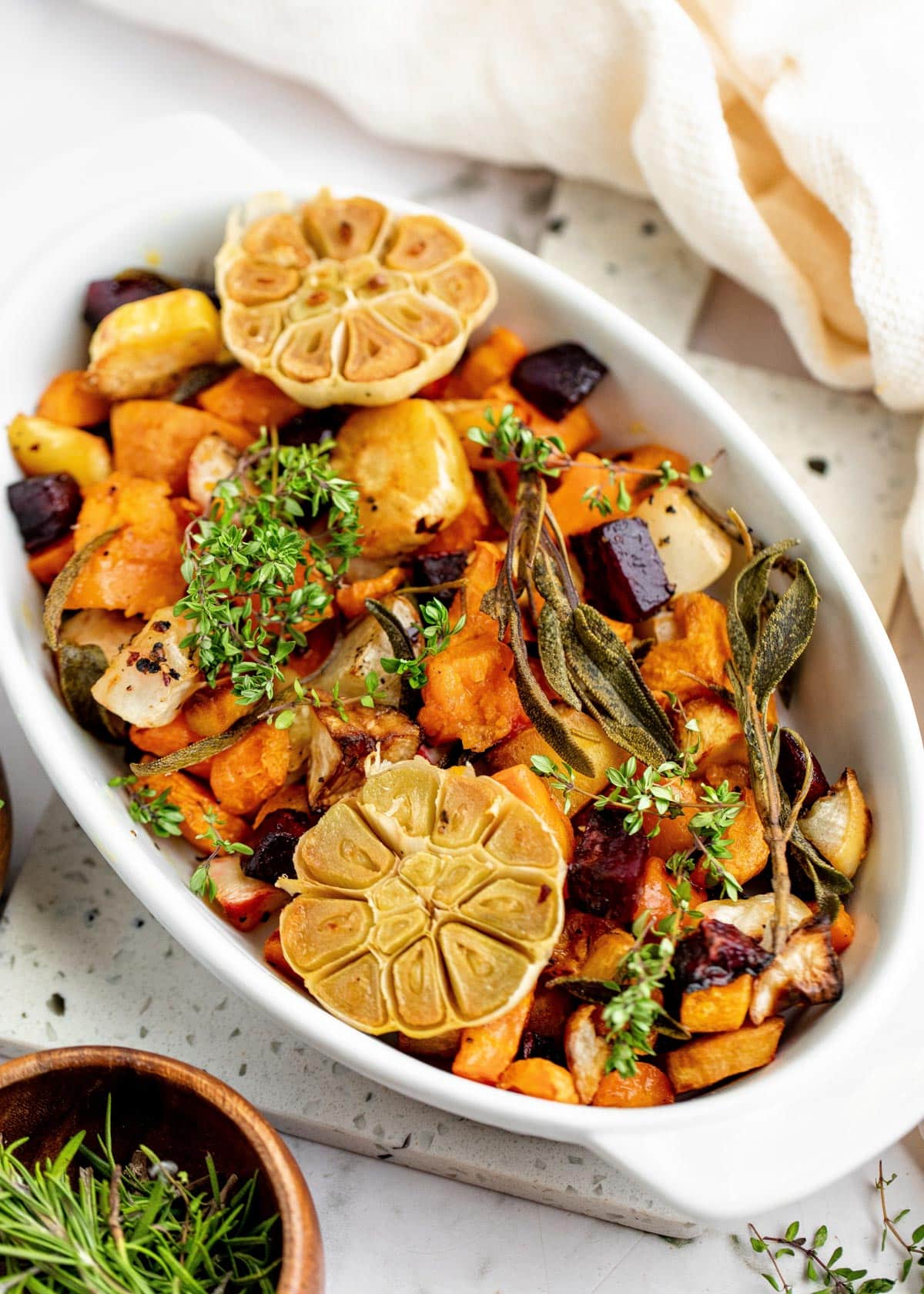
This post contains affiliate links. As an Amazon Associate, I earn a commission (at no additional cost to you) from qualifying purchases made by clicking these links. As always, all recommendations and opinions expressed are my own.
Why We Love Roasting Root Veggies
- Versatility: Roasted root vegetables can be made with any of your favorite varieties, including carrots, sweet potatoes, parsnips, turnips, and more. You can mix and match to create a side dish customized to your preferences.
- Easy to make: Roasting root vegetables is a simple, classic process that requires minimal prep. Just cut up the veggies, toss them with oil and seasonings, and let the oven do the work.
- Great Flavor: The dry heat of the roasting process brings out the natural sweetness of root vegetables, creating caramelized edges that are hard to resist. Roasted root veggies are cozy, comforting, and satisfying.
- Nutritious: Roasted root vegetables are packed with vitamins, minerals, and fiber, making them a wholesome addition to fall and winter meals.
Prefer to use your air fryer? Check out my recipe for Air Fryer Root Vegetables, tossed with a delicious maple glaze!

Ingredients You’ll Need
- Assorted Root Vegetables. You can make this recipe with any root vegetable of your choice. In the photos for this post, we’ve used a combination of carrots (try rainbow carrots for added color!), parsnips, turnips, beets, sweet potatoes, and garlic. Other root vegetables, such as red onions, white potatoes, rutabagas, and celeriac, can also be used to customize the mix to your liking. Choose firm, fresh vegetables for the best results.
- Olive Oil. I recommend using regular olive oil instead of extra virgin, both for its higher smoke point and milder flavor. Filippo Berio Olive Oil {affiliate link} is a staple in my pantry for sauteing and roasting.
- Fresh Herbs. Roast the vegetables with a few sprigs of fresh herbs, such as sage, rosemary, and/or thyme. When plating the roasted vegetables, a few additional sprigs of fresh herbs make a bright and beautiful garnish.
- Salt and Pepper. For seasoning the root vegetables. I use Diamond Crystal Kosher Salt {affiliate link} or fine sea salt and freshly ground black pepper (medium to coarse grind). If you’d like to give the root vegetables a spicy kick as they roast, add a few small pinches of crushed red pepper flakes {affiliate link}.

Prepping the Root Vegetables
Cleaning and Peeling
Start by cleaning your root vegetables well with a scrubbing brush under cool to lukewarm running water to wash away any dirt. I love my Full Circle Ring Brush {affiliate link}, which has a bamboo handle and is made with natural and recycled bristles.
Deciding whether to peel the vegetables depends on the varieties you’re using and your preference. In many cases, the skins contain extra nutrients, fiber, and antioxidants, so you might prefer to leave them on.
Personally, I peel most of my root vegetables for roasting. The exception to this is when I’m roasting thin-skinned varieties, such as carrots, waxy potatoes, and young parsnips, which I sometimes roast skin-on. I also always roast whole garlic bulbs without peeling.
| Root Vegetable | Peel/Optional* |
|---|---|
| Carrots | Optional |
| Sweet Potatoes and Yams | Peel |
| Waxy Potatoes (such as Yukon Gold or Red Bliss) | Optional |
| Floury Potatoes (such as Russet) | Peel |
| Young, Small Parsnips | Optional |
| Larger Parsnips with Thicker Skins | Peel |
| Turnips | Peel |
| Rutabaga | Peel |
| Celery Root (Celeriac) | Peel |
| Beets | Optional |
| Onions | Peel |
*This chart is a general guideline. As a good rule of thumb, if the skin of the root vegetable is thin, you can opt to roast it skin-on or peel it. Thicker, tougher, or more leathery skins should be peeled.
While beet skins are edible, I prefer to peel them for the best texture. Since beets can stain hands and surfaces, I recommend wearing latex gloves while peeling and handling them, prepping them last to minimize cleanup.
Want more tips for peeling beets? Check out How to Make Peeling Beets a Breeze from Real Simple, scrolling down to the “Raw Beets” section.

Cutting Root Vegetables for Roasting
Cut the veggies into (roughly) 1- to 1-1/2 inch pieces. You can be a bit rustic in your chopping skills here, but you’ll want to aim for similarly-sized cuts for even cooking.
I like to cut tubular-shaped root vegetables like carrots or parsnips into rounds or half moons, depending on their thickness. Cut any very thin tips off of carrots or parsnips and discard (or save for stock)–since they’re much smaller, they’ll roast too fast and end up burning before the larger cuts are finished roasting.
Slice rounder vegetables, like potatoes, turnips, and beets into cubes or wedges. If roasting garlic with your veggies, cut the whole bulb in half, crosswise.
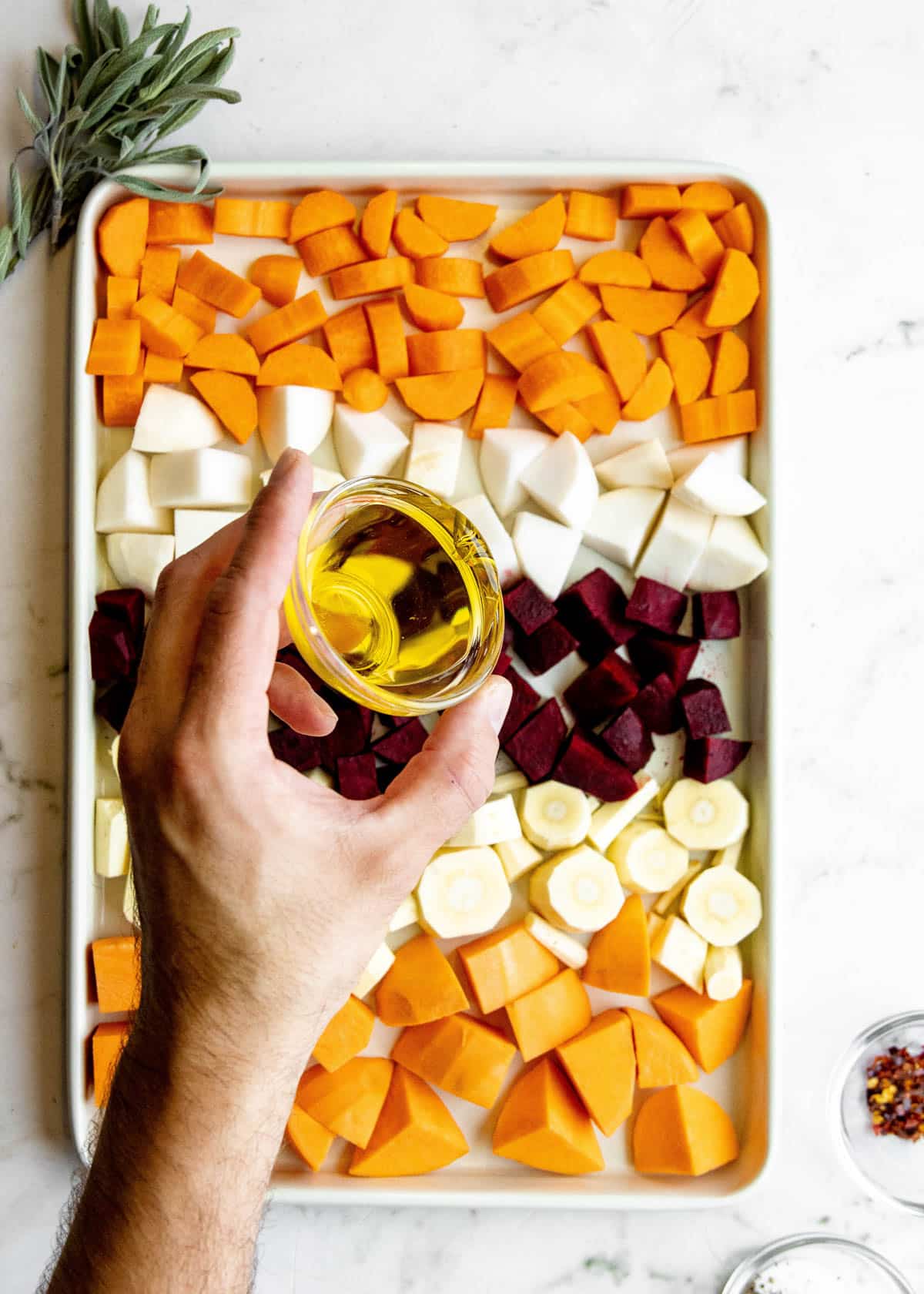
How to Roast Root Vegetables
Preheat your oven to 425 degrees F with the rack in the middle position. For the easiest cleanup, line a rimmed half sheet pan {affiliate link} with foil.
Arrange the prepped vegetables in a single layer on the baking sheet, making sure they’re not too crowded. If you’re roasting garlic along with the root vegetables, hold off on adding it to the pan for now.
If you’re making a large batch of vegetables or they seem tightly packed on the pan you’re using, use two baking sheets instead. This will ensure that the vegetables caramelize instead of steaming.
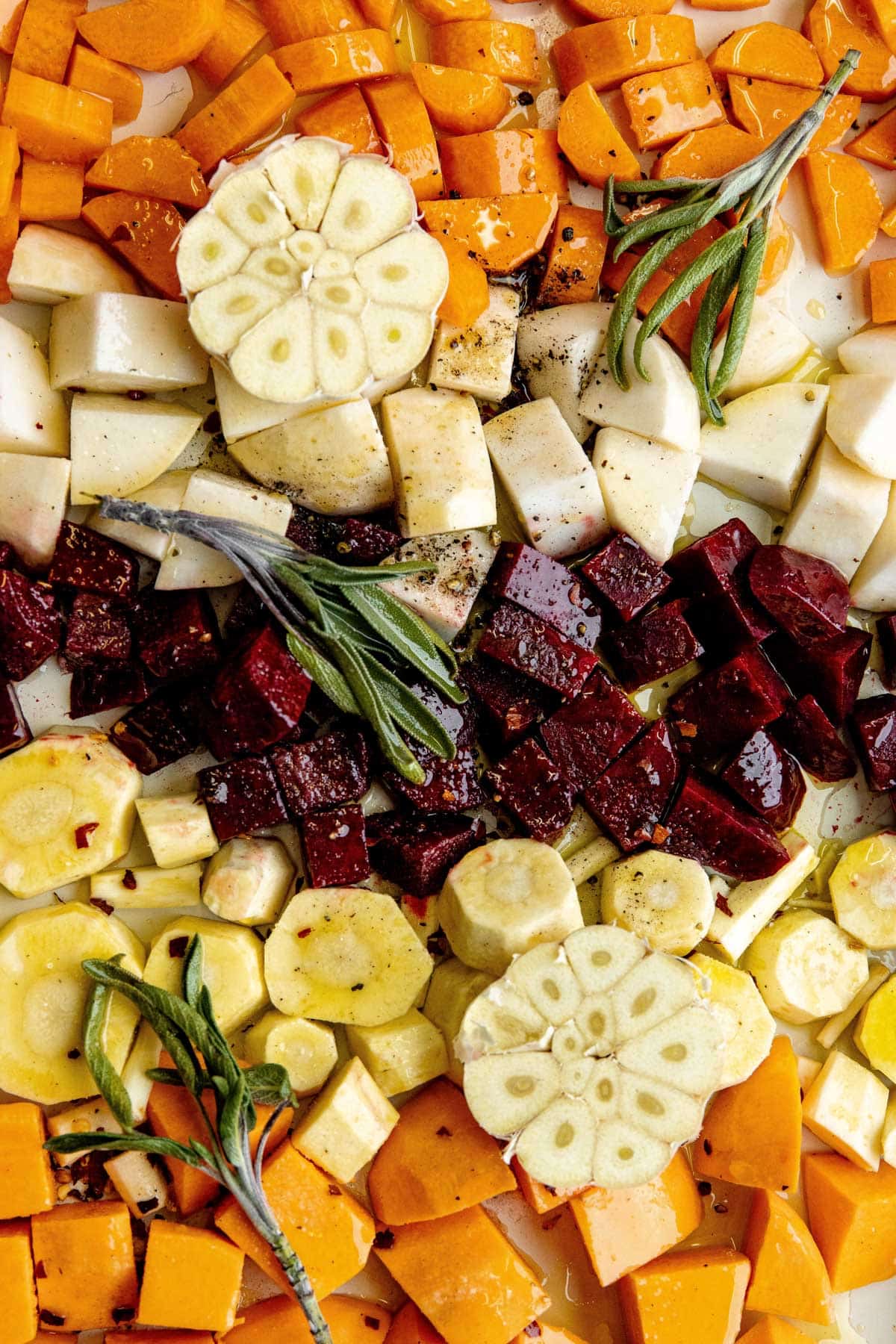
Drizzle the veggies with 3 tablespoons of olive oil and season with salt and pepper, tossing to coat. I use about 1 to 1-1/2 teaspoons of kosher or fine sea salt, and 1/2 teaspoon of black pepper for 3 pounds of vegetables. If you’re adding red pepper flakes for a little extra heat, toss them in with the salt and pepper.
Next, nestle the halved garlic bulbs among the vegetables and drizzle each with some of the remaining oil. Season with a pinch of salt and pepper.
Before roasting, lay a few sprigs of fresh sage (or another herb of your choice) over the vegetables. They’ll crisp in the oven and infuse the dish with a delicious aroma.
Roast the root vegetables for 40-60 minutes, stirring halfway through to ensure even cooking. If the vegetables seem dry at any point during the roasting process, drizzle them with a little more oil.
When the vegetables are ready, they’ll be tender in the center and browned around the edges, with a deliciously caramelized flavor.
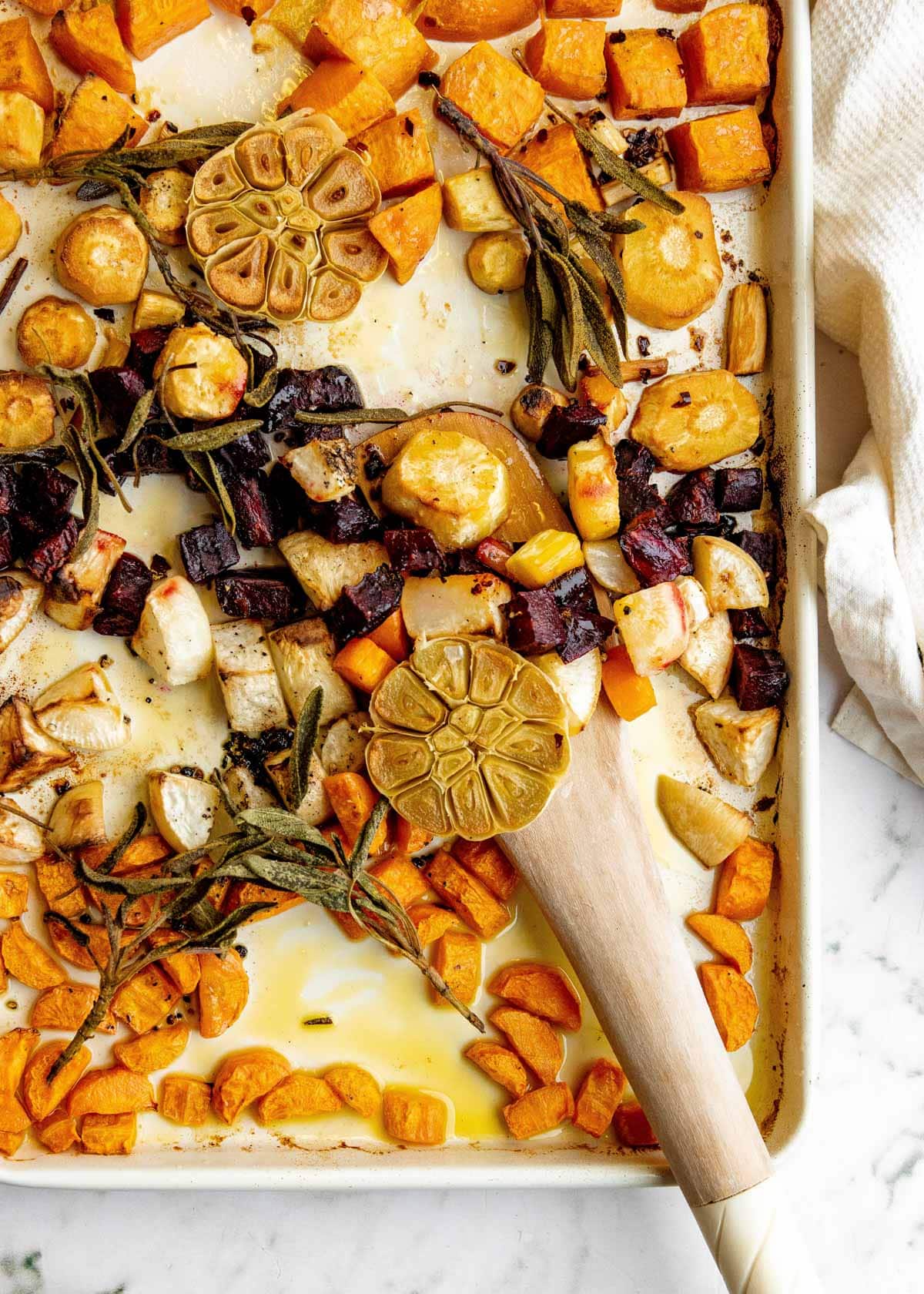
Serving Roasted Root Vegetables
To serve, season the vegetables to taste with additional salt and pepper. I like to garnish them with fresh herbs on the serving platter, such as thyme, rosemary, or chopped parsley for a fresh pop of color.
Roasted root vegetables make a simple and delicious side dish for a variety of fall and winter meals. We often enjoy them with roasted chicken, pork loin, or pork chops for a cozy meal. I also love them with this Pecan-Crusted Salmon.
This recipe is also a great addition to a holiday dinner, adding a colorful and festive touch to the table. They’re especially delicious alongside roasted turkey breast for Thanksgiving.
Looking to add more roasted vegetables to your repertoire? You might enjoy my recipes for Roasted Cabbage Wedges and Roasted Radishes!
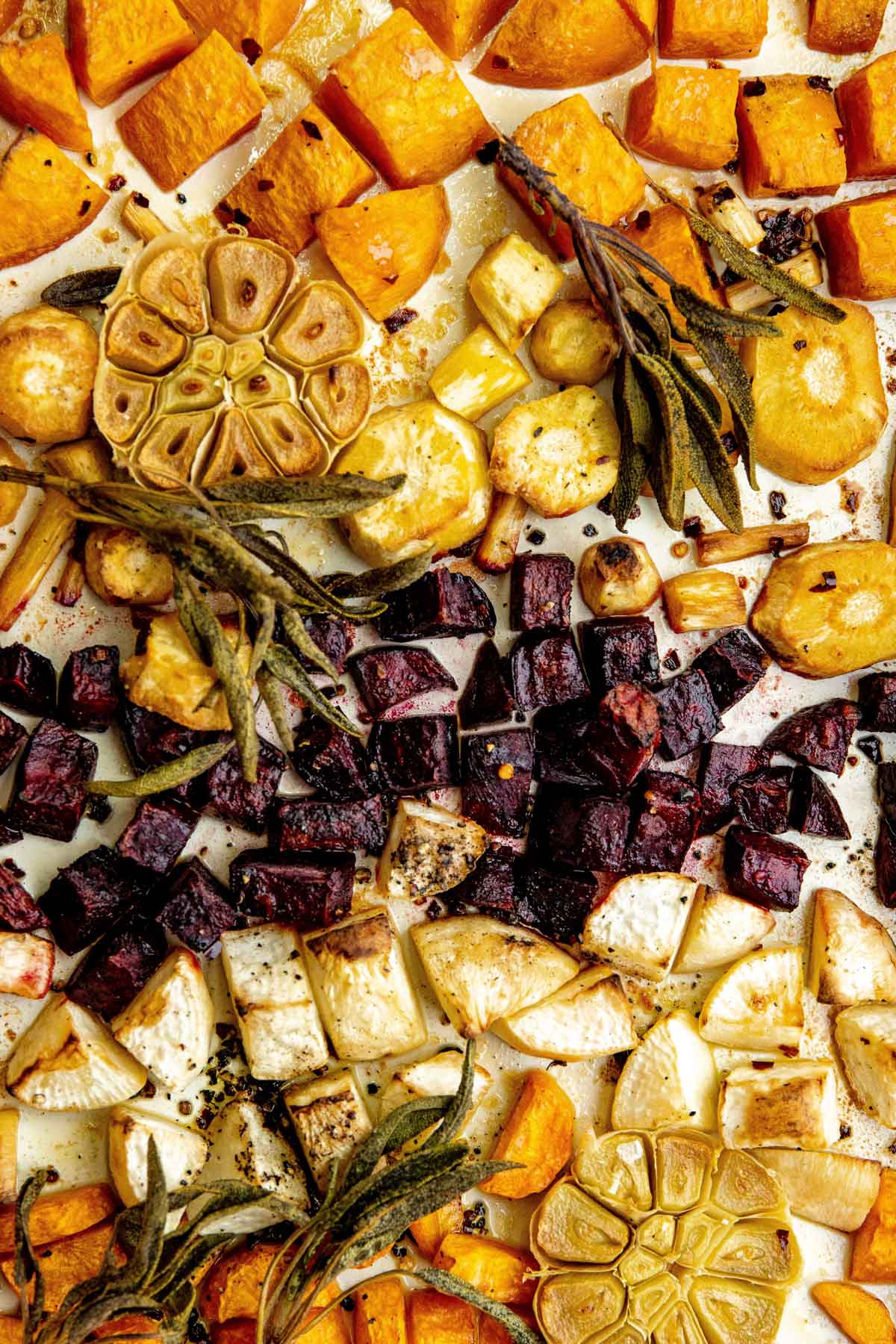
Storing, Reheating, and Leftovers
Roasted Root Vegetables reheat pretty well, so they’re an excellent choice for a make-ahead dish or enjoyed as leftovers. When cooled, store them in an airtight container in the refrigerator for 3-4 days.
You can reheat roasted root vegetables in the oven, air fryer, in a pan on the stove, or using the microwave.
- To reheat in the oven. Spread the veggies onto a rimmed baking sheet and bake at 350 degrees F for about 10 minutes, until heated through.
- To reheat in the air fryer. Place the root vegetables in a single layer in the air fryer basket and cook at 380 degrees F for 2-3 minutes, until heated through. Air fryer times can vary by model.
- To reheat in a skillet. Heat about a tablespoon of oil in a nonstick skillet over medium-high heat. Add the root vegetables in a single layer and saute until heated through and crisped on the edges.
- To reheat in the microwave. Place the veggies on a microwave-safe plate and cover them with a plastic microwave cover {affiliate link}. Reheat using 20 to 30-second intervals, until the vegetables are heated through. (Though it’s quick and convenient, using the microwave is not my favorite method since it doesn’t re-crisp the root vegetables.)
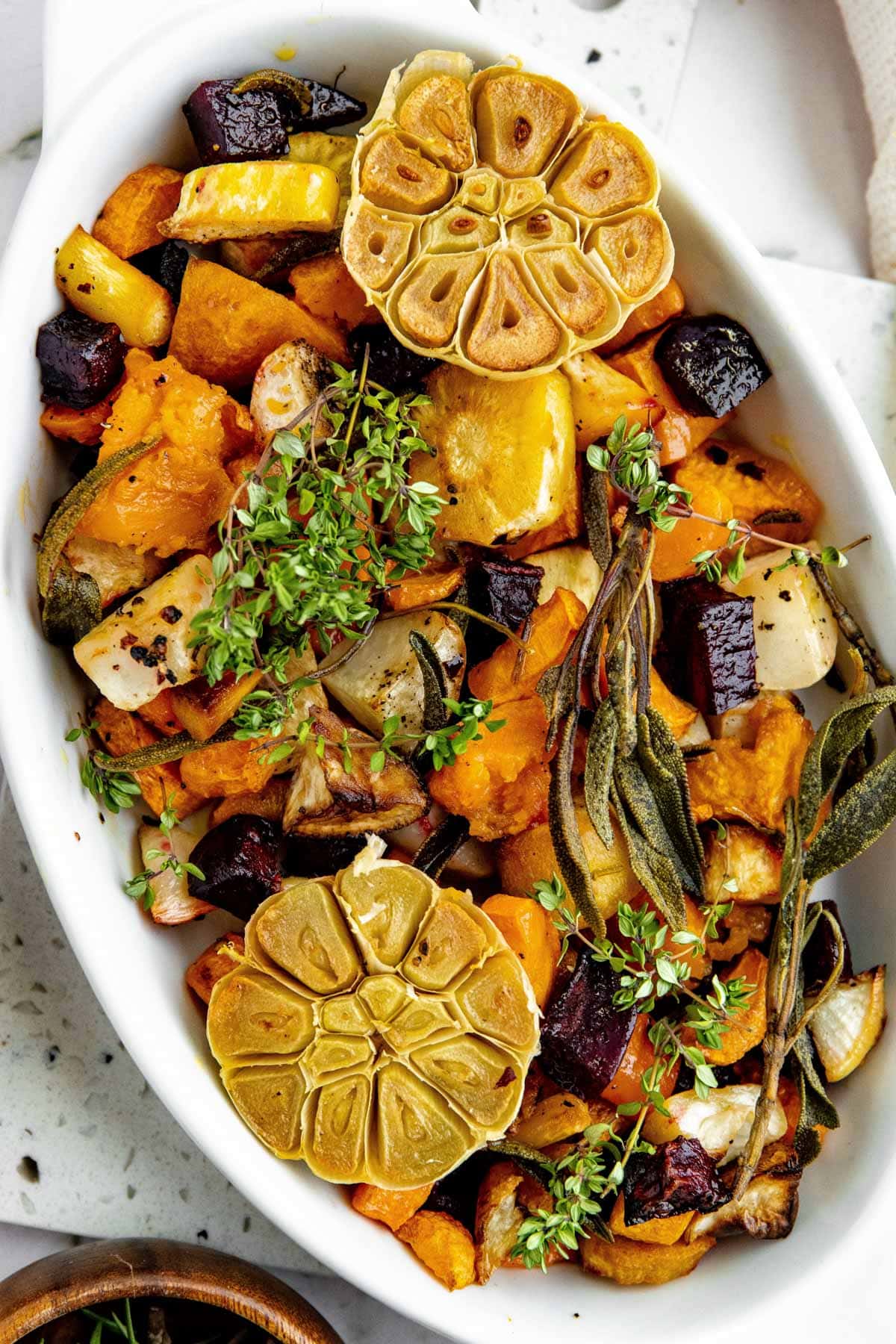
Using Leftover Roasted Root Vegetables
- In a salad: Roasted root vegetables can add a hearty and flavorful boost to your fall and winter salads. Combine them with leafy greens, nuts, crumbled goat cheese, and your favorite dressing (try our Maple-Dijon Vinaigrette) for a satisfying meal. You can use roasted beets or sweet potatoes in our Harvest Cobb Salad instead of the butternut squash.
- As a soup: Leftover roasted root vegetables can be transformed into a delicious soup. Puree them with enough broth or stock to reach your desired soup consistency, season to taste, and serve with a dollop of creme fraiche or a drizzle of heavy cream.
- As a topping: Roasted root vegetables make a delicious topping for an autumnal pizza or flatbread. Simply add them to your favorite pizza dough with mozzarella and dollops of ricotta and bake until the crust is golden and the cheeses are melted. Lightly drizzle the pizza with balsamic glaze for a sweet-tangy finish.
- For an easy breakfast hash. Cook a few strips of bacon in a skillet until crisp. Remove it from the pan and crumble. Remove all but 1 tablespoon of bacon fat from the pan and add the root vegetables, cooking until they’re heated through and crispy. Add the bacon back into the pan and toss to combine. Serve with a poached or fried egg for a hearty breakfast.
More Fall & Winter Side Dishes
CRAVING MORE? Subscribe to my newsletter and join me on Facebook, Pinterest, and Instagram for the latest recipes and news.

Roasted Root Vegetables
Ingredients
- 3 pounds assorted root vegetables (such as carrots, beets, turnips, parsnips, and sweet potatoes)
- 1 whole head of garlic (optional)
- 4 tablespoons regular olive oil , plus additional if needed
- 3-4 sprigs fresh sage leaves (or another fresh herb of your choice, such as thyme or rosemary)
- kosher or sea salt and freshly ground black pepper
- chopped fresh herbs , for garnish
Instructions
- Preheat oven to 425 degrees F with the rack in the middle position. Line a half-sheet pan with foil for easy cleanup.
- Peel root vegetables and cut into 1-1/2 inch chunks or slices (see note below). Cut and discard any very thin tips from tubular vegetables, such as carrots and parsnips. If using, cut the whole head of garlic in half crosswise, without peeling.
- Add the vegetables (except for the garlic) to a large baking sheet. Toss with 3 tablespoons of olive oil to coat, and season with salt and pepper. (I typically use 1 to 1-1/2 teaspoons of salt and 1/2 teaspoon medium- to coarse-grind black pepper.)
- Nestle the two garlic halves into the root vegetables and drizzle each with some of the remaining 1 tablespoon of oil. Season with a pinch of salt and pepper. Place the sprigs of sage on top of the root vegetables.
- Roast for 40-60 minutes, stirring halfway through, until the vegetables are tender and caramelized around the edges.
- To serve, season to taste with salt and pepper and garnish the serving platter with fresh herbs (such as fresh thyme, rosemary, or parsley). Serve hot or warm. Store leftovers in an airtight container in the fridge for 3-4 days.
Notes
Nutrition Estimate
Nutrition information is automatically calculated, so should only be used as an approximation.
About our recipes
Please note that our recipes have been developed using the US Customary measurement system and have not been tested for high altitude/elevation cooking and baking.



